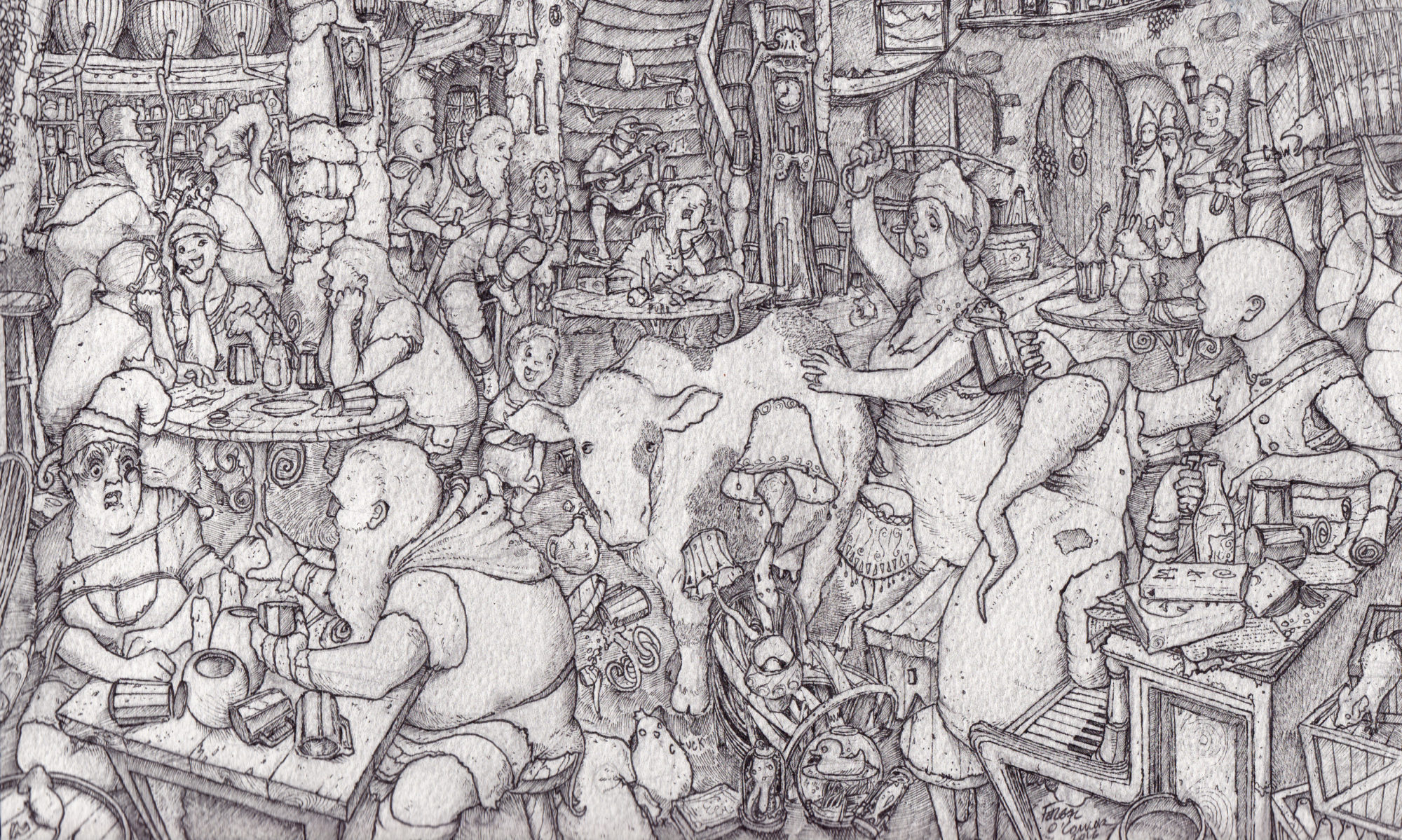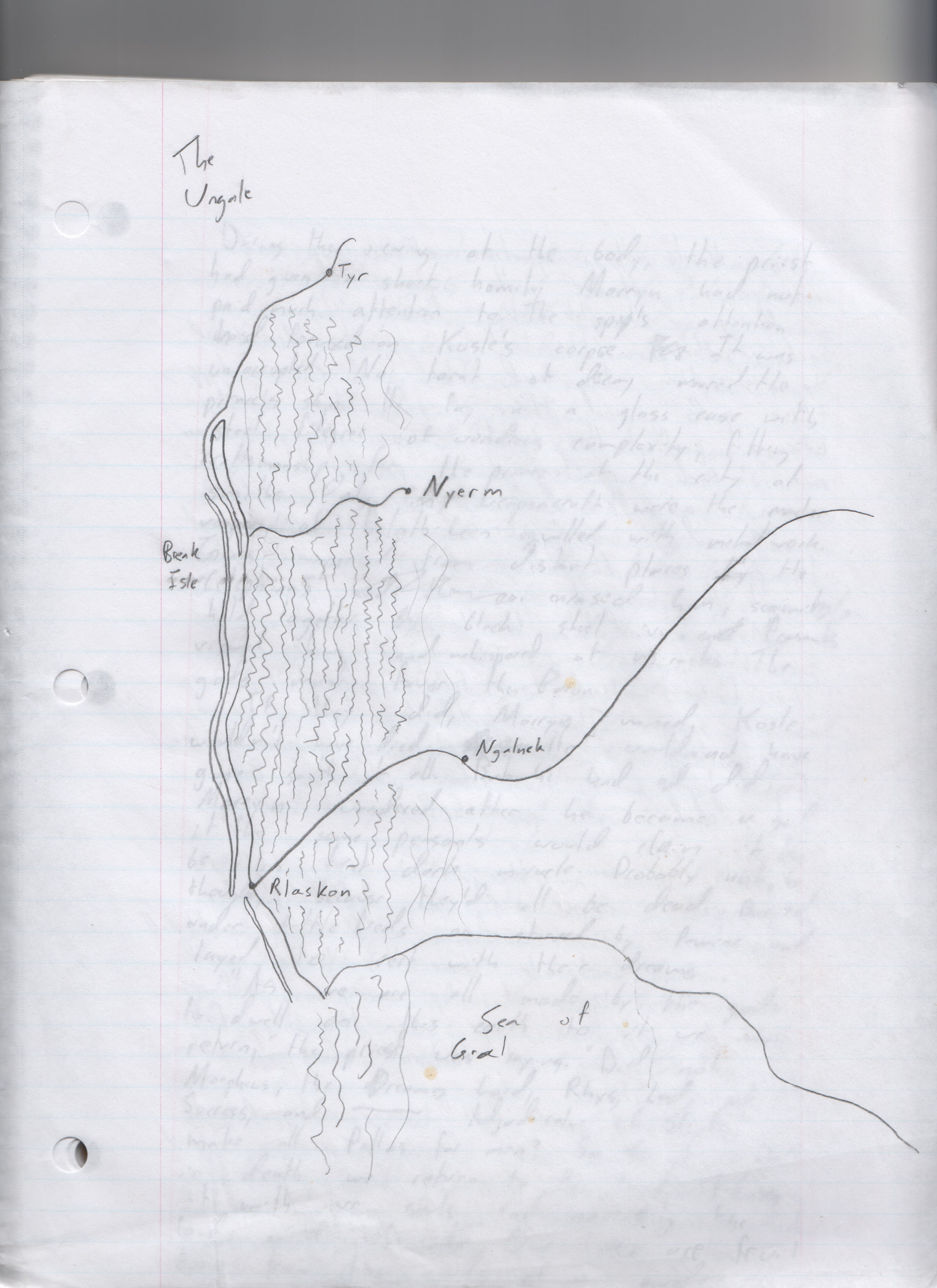Herrick reached out to me on tapas.io after he started two series. The first, A Scholar’s Journey, is complete. It’s available at Patreon here. I don’t have a book or ebook link. The second is KRIS – First Impact which is still ongoing. I offered some advice about dialogue, and he said he would like it for First Impact.
Anyone who reads and subscribes to my material may get a chapter’s worth of extensive C&C. He subbed Bloodharvest so here goes. I hope this is useful and productive.
C&C for Herrick
Your number one objective in writing is make the reader care. Through dialogue you have a few tools to do this.
The first is empathy. Your reader will follow a character’s emotions at least a little bit, and more or less depending on how the character is presented. (While there are exceptions, they usually involve odd situations or a lot of setup.) In an intro chapter like this, you want the reader to care about the story. As such always have the characters care. Never have them dismissive or apathetic about the plot, because the readers will empathize with the characters and thus not care about your story.
The beginning of your story gets exciting a few pages in with the introduction of Hale. The first part is just rounds. But since you’re using dialogue to introduce the setting (This is a great choice, btw), you need to make two guards making rounds interesting. This is another form of making the reader care, so you want to use more tricks.
The next trick is use the power of names. People attach memories and importance to names. I’m not talking about anything mystical; I’m talking about the fact that if someone knows someone else’s name or a character’s name, caring about that person or character is a little easier. The two guards need names and descriptions, and those names and descriptions need to be interesting, because we need to care about them enough to read about two guards making rounds.
Who are the guards? I need detail. The first should be name, the second rank (just because you invoke one calling another sir and in the military, that’s a rank thing). So Private Smith and Lieutenant Jones need nametags or something. Most uniforms have them. This also gives you an inroad to describing the guards. Keep it brief unless they’re going to be important characters, but we need a few details.
In terms of detail, specific is almost always better than general.
So Private Bob Smith’s khaki uniform needs to be excessively clean and pressed, his weapon, the newly issued assault rifle with Micron Optic and double-mags, should be slung in a single-point sling, and his head shaved to perfection. Lt Marian Jones needs to be ten kilograms overweight, rough-shaven, and his slacks and jacket have faded until they’re different colors. He’s unarmed except for a holstered gel-wand that hasn’t been drawn in so long it has lint stuck in it. Lt Jones clearly doesn’t own an iron, much less has used one on his uniform since mankind reached the stars.
Obviously I’m making all this up, but see how it’s fast, specific, and identifiable? Smith and Jones are now people. That description also sets up the discussion of weapons later. Call-back details like that reward the reader and encourage investment.
Now into the dialogue itself.
First, regarding point 1, never have another character tell the first one to relax or not care unless you want the reader to empathize with the second character who is about to emphatically care. Lt Jones needs to be telling Pvt Smith how deadly these killers are. He needs to be telling Smith to never let his guard down. Prisoner Dane might look innocent, but no one on this block is innocent. He is a seriously bad dude. It’s a damn shame they’re not allowed to shoot to kill. If Lt Jones had his way they wouldn’t shoot first and ask questions later, they’d shoot first and reload.
Secondly, don’t shift gears suddenly, especially not this early. The officer tells the newbie that Dane does nothing but workout and eat, but then says he’s dangerous. That’s a shift. Set it up so working out and eating is dangerous. Make mention of the nanites if you can. That’s a good detail, so use it. Likewise, later, the newbie mentions this is an orbital prison where no one has escaped in twenty years. Then he suddenly asks what’s the prisoner’s name. Massage that a little so it’s one thought.
Suggest: “But sir!”
“Didn’t I say don’t call me sir?” asked Lt Jones, looking away and above Smith’s head.
Pvt Smith was too excited to stop. “Sir, no one’s escaped from Orbital Prison 6 in twenty years. There’s no chance that prisoner—” Smith paused to look up the prisoner’s name in his datasheet. “—Dane could be the first!”
See how that’s one thought and it escalates? It drags the reader into caring. Notice also how Pvt Smith is the newbie learning about the setting, like us readers, and he cares, like you want us readers to do? Jones reiterates that he doesn’t like being called sir, the callback that reinforces investment, and is very speciifcally dismissive about only that, not the plot as a whole? The reader is rewarded and encouraged to care about the plot.
On the subject of escalation, it’s an old rule of thumb that the author should always be raising the stakes. It’s a good rule of thumb. Build, build, build. If your characters get more and more excited, they’ll drag the readers along too.
Look, as a reader I want to be excited. I want to care about your story. If I didn’t, I wouldn’t read it and I’d be writing VHDL for work. I’m not doing that. I want to be dragged away. Give me an excuse.
Speaking of, the orbital prison is a good detail. Support it. Add cool space-age details. Don’t wait until the next chapter, because you’ve got to hook your readers now. Throw some zero-g around, or make everything green. Add awesome. Have a window that overlooks the sun to demonstrate the space station isn’t even in orbit over a habitable world. Raise the stakes.
Part One

